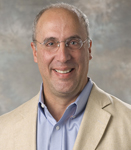This post was originally published on the IntraHealth International blog.
I just returned from liste ning to a brilliant and inspiring speech by Secretary of State Hillary Clinton. Secretary Clinton traced the history of the HIV/AIDS pandemic, from the dark days of the 1980s, when little to nothing was understood about the disease and how to fight it, to today, when, armed with the tools made possible by science, great strides are being made in bringing HIV/AIDS under control. As she correctly pointed out, United States (US) leadership and investment have been at the forefront every step of the way. Investments in science led to understanding the virus, developing treatment, and building evidence-based prevention programs. The result has been a marked decline in the incidence of the disease, millions of infections prevented, and millions under treatment. Many institutions and people have contributed to this remarkable change. That said, the contribution of the US government to the fight against HIV/AIDS has been essential to the progress achieved. The US contribution to the cause of fighting HIV/AIDS, and global health more generally, has been a pillar of US leadership in the world. Read more »
ning to a brilliant and inspiring speech by Secretary of State Hillary Clinton. Secretary Clinton traced the history of the HIV/AIDS pandemic, from the dark days of the 1980s, when little to nothing was understood about the disease and how to fight it, to today, when, armed with the tools made possible by science, great strides are being made in bringing HIV/AIDS under control. As she correctly pointed out, United States (US) leadership and investment have been at the forefront every step of the way. Investments in science led to understanding the virus, developing treatment, and building evidence-based prevention programs. The result has been a marked decline in the incidence of the disease, millions of infections prevented, and millions under treatment. Many institutions and people have contributed to this remarkable change. That said, the contribution of the US government to the fight against HIV/AIDS has been essential to the progress achieved. The US contribution to the cause of fighting HIV/AIDS, and global health more generally, has been a pillar of US leadership in the world. Read more »
